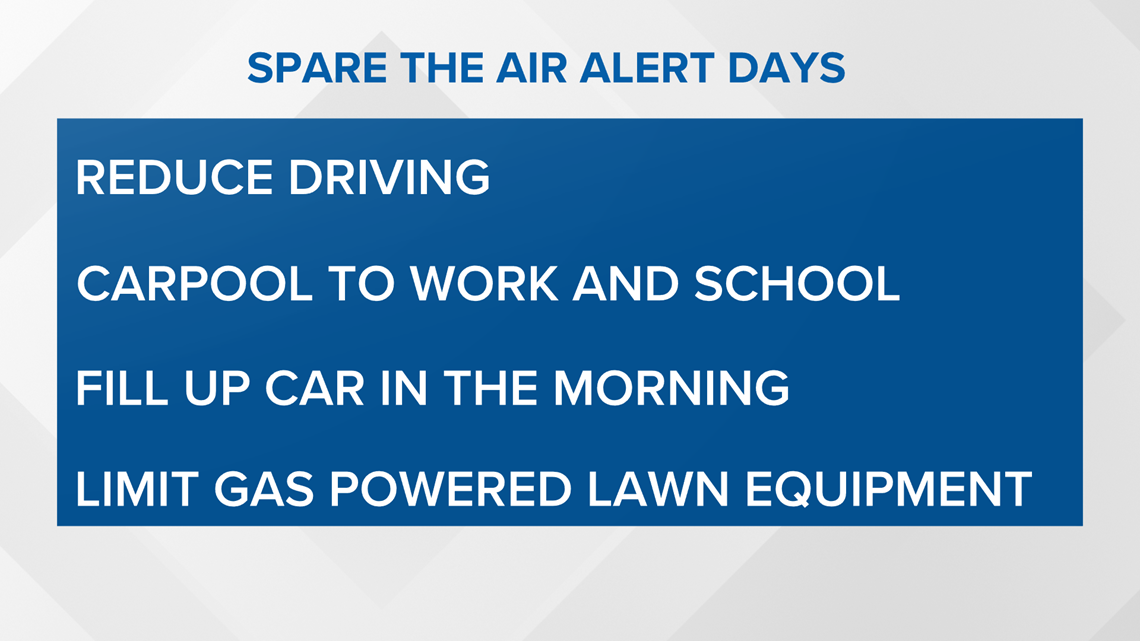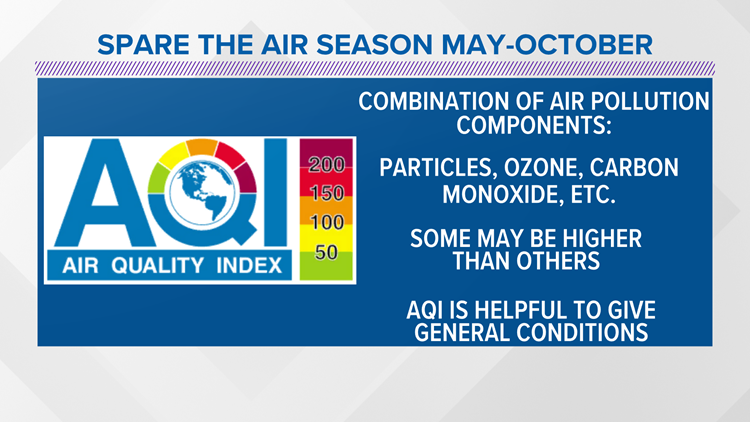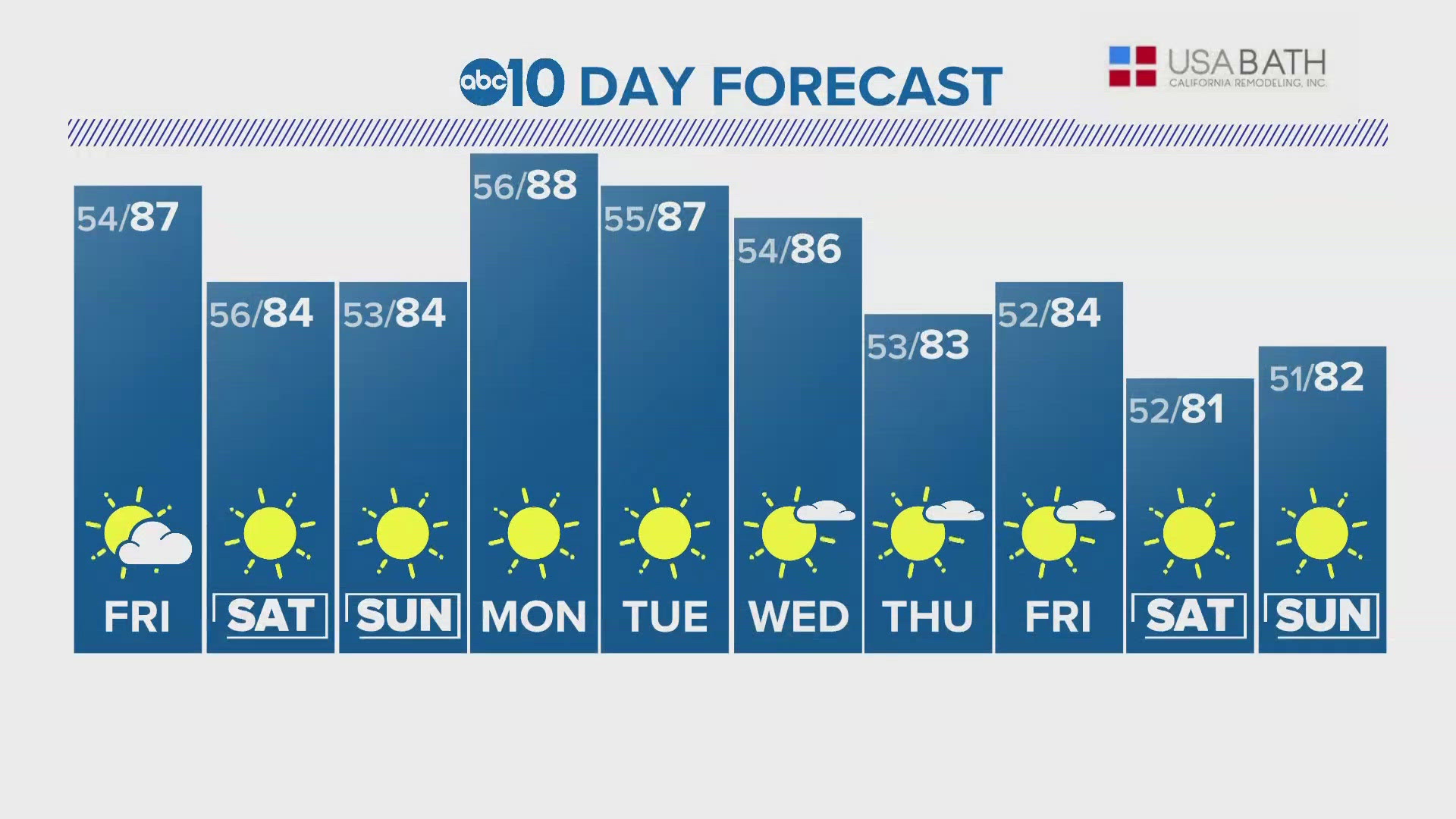CALIFORNIA, USA — May 1 marks the beginning of the Sacramento region’s annual Spare The Air season. This area includes the Sacramento Metropolitan, El Dorado, Feather River, Placer and Yolo-Solano Air Districts.
The season runs from May 1 through October 31. During this time, a Spare The Air Alert will be issued when the Air Quality Index (AQI) for ground-level ozone is forecast to be 126 or higher.
Jamie Arno with the Sacramento Air Quality Management District (SAQMD) says Spare The Air season is a driving reduction program because 70% of our ozone air pollution is caused by cars and trucks.
A Spare The Air Alert day is a way to help us know when there are concerning levels of ozone. To help keep the air quality cleaner, consider carpooling, taking transit or even walk and ride electric scooters.


Ozone is created from the sun’s ultraviolet rays reacting with volatile organic compounds (VOC) and oxides of nitrogen (NOx) to form ground-level ozone. Sources of VOC and NOx are cars, trucks, buses, construction/agricultural equipment.
The weather pattern from May through October is predominately stable with light winds, little cloud cover and very little rain. This helps promote ozone pollution.
During the day, most factors come together to help ozone build. Due to predominately light westerly flow, pollution from the coast is carried toward the valley and tends to get “stuck.” The middle altitude in the valley becomes warmer than the ground, producing an inversion. This warmer air acts like a blanket over the area resulting in minimal vertical mixing.
Light low-level winds are not strong enough to adequately disperse the pollutants or push it farther west over the Sierra Nevada Mountain, so it settles in the valley. The poor air quality peaks during the afternoon and early evening hours with the daytime heat and more vehicles on the road.
High levels of ground-level ozone can lead to health problems especially in the elderly, children and people who have compromised respiratory systems. Wheezing, coughing, fatigue, headache and nausea can all be side effects of poor air quality.
Arno says they will also continue to separately monitor particulate matter (PM) and wildfire smoke. This is a mixture of soot, smoke, metals, nitrates, sulfates, dust, water and even tire rubber. It can be the product of a wildfire or a reaction of gases such as nitrogen oxides.
This type of pollution can be particularly dangerous because the particles are so small they can move right into the lungs and even our bloodstream. Long and short-term exposure to Particulate Matter (PM) 2.5 can have an impact on our health. Difficulty breathing, aggravated asthma, development of chronic respiratory disease in children, development of chronic bronchitis or lung disease, irregular heartbeat, nonfatal heart attacks and premature death in people with heart or lung disease.
The key signs to know when PM 2.5 becomes dangerous is seeing or smelling smoke. It's best to stay indoors when conditions are present.
Arno says the SAQMD works closely with Sacramento County Public Health concerning wildfire smoke and PM 2.5. She says they will issue health advisory when levels become an issue.
Wildfire smoke was especially poor during the summer of 2020 due to the historic fire season. Winds helped carry smoke from surrounding fires into the valley.
However, the shelter in place order last year helped keep ground-level ozone down. Arno says they only had to issue one Spare the Air Alert last year because fewer people were driving. This is below the average of 5-12 Spare the Air Alerts per year.
Air quality typically improves by November because cooler weather systems move through Northern California. The upper air movement and precipitation keep the pollutants from stagnating.
The Sacramento Region Air Quality app gives daily updates and ways to protect our health. This is available for download on both Android and Apple devices.



















